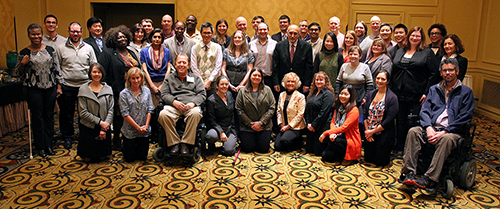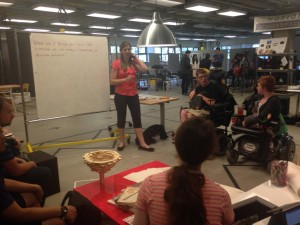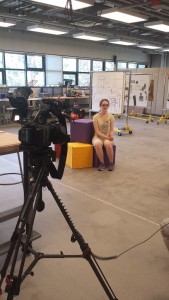 Sasha Portnova is presenting her research on 3D-printed wrist-driven hand orthoses today in The International Conference of Undergraduate Research (ICUR). The conference is an annual multidisciplinary forum that connects students from universities in seven countries across the world. Sasha was the sole person selected from the ME department at UW to present. Great work, Sasha!
Sasha Portnova is presenting her research on 3D-printed wrist-driven hand orthoses today in The International Conference of Undergraduate Research (ICUR). The conference is an annual multidisciplinary forum that connects students from universities in seven countries across the world. Sasha was the sole person selected from the ME department at UW to present. Great work, Sasha!
Projects
Lab featured in ME Video
 The Ability & Innovation Lab was featured in the College of Engineering’s Video on mechanical engineering. Hopefully we can help to get more future engineers interested in working with the ultimate machine! Sylvie and Gaurav did a fantastic job sharing their experiences and future ambitions working as mechanical engineers.
The Ability & Innovation Lab was featured in the College of Engineering’s Video on mechanical engineering. Hopefully we can help to get more future engineers interested in working with the ultimate machine! Sylvie and Gaurav did a fantastic job sharing their experiences and future ambitions working as mechanical engineers.
You can watch the full video here: You Tube
Capacity Building Institute
 The proceedings from AccessEngineering’s first Capacity Building Institute have been published on-line.
The proceedings from AccessEngineering’s first Capacity Building Institute have been published on-line.
This institute focused on bringing together faculty, staff, and students from engineering departments around the country to discuss how to support individuals with disabilities in pursuing careers in engineering.
There were many wonderful presentations and discussions. In particular check out:
- Panel of engineers and students
- Recommendations for making engineering more accessible
- Universal design in the engineering curriculum
These discussions helped to inform several new resources from AccessEngineering including:
- Making a Makerspace? Guidelines for Accessibility and Universal Design
- Equal Access: Universal Design of Engineering Departments
- Equal Access: Universal Design of Engineering Labs
- Checklist for Making Engineering Labs Accessible to Students with Disabilities
The Capacity Building Institute was hosted at the University of Washington-Seattle April 7-9, 2015. Please let us know if you are interested in participating next year!
KUOW Feature: Accessible Makerspaces
 We were privileged to have Jamala Henderson from KUOW Public Radio join in during our brainstorms and activities for creating accessible makerspaces.
We were privileged to have Jamala Henderson from KUOW Public Radio join in during our brainstorms and activities for creating accessible makerspaces.
She has put together a wonderful news story about our project and included some great quotes from the students about why we should create accessible makerspaces:
“The cool thing about engineering spaces is a lot of people use engineering spaces to help solve other problems for people with disabilities, and I think it would be cool if people with disabilities were more involved with solving their own problems.” – Kayla Wheeler
Listen to the full story here: KUOW 94.9 FM
KING 5 News: Makerspaces
 Check out KING 5 News at around 5:30pm this evening. They will be featuring a short piece on AccessEngineering‘s guidelines for creating accessible makerspaces.
Check out KING 5 News at around 5:30pm this evening. They will be featuring a short piece on AccessEngineering‘s guidelines for creating accessible makerspaces.
You can view the final video and story here.
Hannah, one of the UW DO-IT Scholars who helped to create the guidelines, did a great job in the hot seat! She helped to share her experiences as an individual with visual impairments for making a welcoming and accessible space. She contributed key observations such as remembering how important mental maps are for individuals with visual impairments. Having flexible workspaces (furniture on wheels, etc) is great in makerspaces, but having key equipment organized and in fixed locations helps her build a mental map of the space. Hannah will be a freshman at UW in the fall and is considering majoring in physics or engineering. I’m sure she will have many creative things to build in the makerspace as a new student.
Go Hannah!
